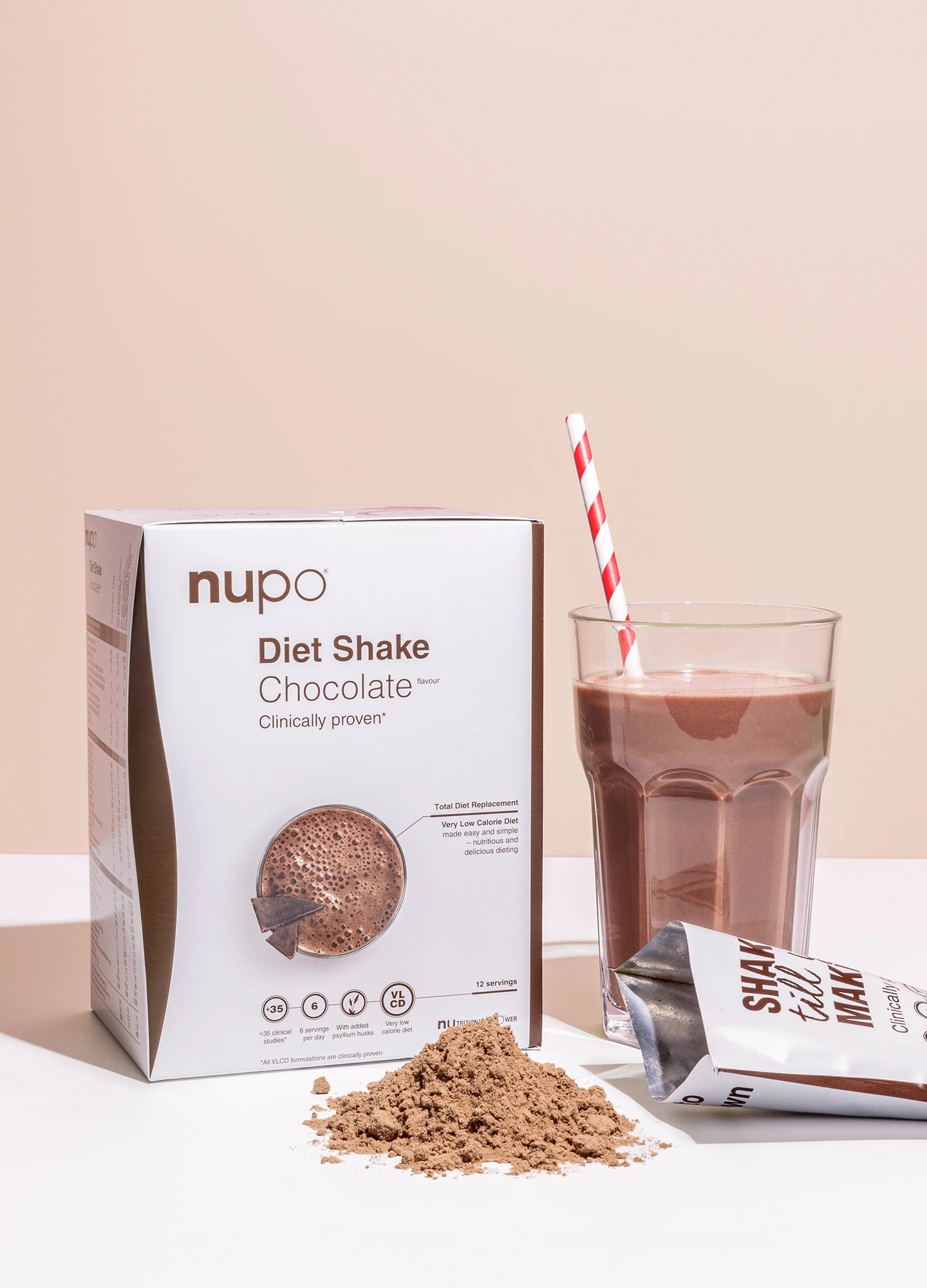Weight loss with semaglutide and VLCD in type 2 diabetes
MAY 30, 2024, by Massi Fazli, Clinical Dietitian, NUPO Denmark

In recent months, we have increasingly encountered the question of whether weight loss using drugs containing the substance semaglutide (Ozempic, Wegovy or Saxenda) is effective.
Many people choose diabetes/weight loss medications as an easy solution, but they are often unwilling to change their habits or eat healthily. Obesity is a chronic metabolic disease that affects millions of people worldwide and increases the risk of several serious health conditions, including type 2 diabetes. According to the National Institute of Health , overweight and obesity currently affect almost 60% of adults and almost one in three children in Europe. Also in the Czech Republic, more than 60% of people are significantly above a healthy weight.
This development makes obesity one of the greatest threats to public health, especially since it is one of the leading causes of preventable death. There is therefore an urgent need for effective interventions that can reduce the incidence of obesity and its impact on lifestyle diseases, especially type 2 diabetes.
Weight loss with the combination of semaglutide and VLCD - study
One of the most effective strategies for weight loss in people with type 2 diabetes is the use of semaglutide . Semaglutide is a drug that belongs to the group of so-called GLP-1 (glucagon-like peptide 1) receptor agonists. This drug is mainly used to treat type 2 diabetes.
Semaglutide, which requires an eight-week dose escalation period, has been shown to result in an average weight loss of 4.5 kg over 30 weeks. Semaglutide is approved by NICE guidelines for the long-term treatment of type 2 diabetes and a higher-dose formulation, called Wegovy, is approved for the treatment of obesity. The key goal for people with type 2 diabetes is to achieve optimal glycaemic control, which can be improved by weight loss.
Another effective weight loss strategy is the very low-calorie diet (VLCD) . The VLCD involves a daily caloric intake of around 800 kcal and has been shown to lead to significant weight loss and improved glycemic control.
To determine the effect of combined treatment with semaglutide and VLCD, a study was conducted with 19 people with type 2 diabetes and a BMI greater than 27. Participants were randomly assigned to one of three groups for 12 weeks, depending on what they were treated with: semaglutide (7 people), VLCD (7 people), and a combination of semaglutide and VLCD (5 people).
And what is the result?
The study showed that all three groups achieved significant weight loss . However, weight loss was significantly greater in participants using the VLCD and combination therapy compared to those receiving semaglutide alone. Weight loss was 14.9 kg in the combination therapy group and 14.0 kg in the VLCD group, compared to an average loss of 6.4 kg in the semaglutide alone group.
The combination treatment resulted in the greatest percentage weight loss (14.2%), which was significantly greater than the weight loss in the semaglutide group (6.3%). VLCD also resulted in a greater percentage weight loss compared to semaglutide alone (11.6%), but there was no significant difference between the VLCD and combination groups.
All groups experienced significant reductions in HbA1c levels with a trend towards greater reductions in HbA1c in the combination therapy group compared to the semaglutide group (21.2 mmol/mol vs. 11.3 mmol/mol, p = 0.065).
Benefits of VLCD compared to Semaglutide
The study results also highlight several advantages of VLCD compared to semaglutide alone:
Greater weight loss : Our clinical experience and research show that VLCD leads to significantly greater weight loss in a short period of time compared to semaglutide. For people who urgently need to lose weight to improve their health, such as reducing joint stress, improving cardiovascular health, or in preparation for surgery, this rapid weight loss method is an invaluable resource.
Improved glycemic control : The combination of VLCD and semaglutide provides better glycemic control compared to semaglutide alone. This means that people may experience more stable blood sugar levels, which is crucial for those battling type 2 diabetes. In fact, this combination may be a key factor in achieving diabetes remission, one of our ultimate goals in diabetes management.
Reduced insulin resistance : Insulin resistance is a major problem in type 2 diabetes. VLCD has been shown to reduce insulin resistance more effectively than semaglutide alone. By improving the body's ability to respond to insulin, we can help people improve their glucose metabolism and reduce their risk of serious complications.
Healthy Habits and Dietary Changes : One of the most valuable aspects of a VLCD is its ability to support the development of healthy habits and dietary changes. We often see people who have undergone a VLCD gain a better understanding of their diet and nutritional needs – both in terms of portion sizes, nutrient content and calorie reduction, this diet gives them the tools to make healthier choices that are essential for long-term weight control and overall health.
Adequate Nutrition : An important aspect of a VLCD is that it ensures that patients are getting the nutrition they need, even when their caloric intake is low. Unlike the hunger that some may experience with semaglutide alone, where they may simply eat less without paying attention to nutritional quality, a VLCD offers a structured approach. This ensures that a person not only loses weight, but also maintains their health by getting all the essential nutrients, which is crucial for their short-term and long-term health.
Conclusion
VLCD combined with semaglutide represents an effective strategy that can lead to significant improvements in weight, blood glucose control, and overall health. We see this as a promising way forward for many, especially those with type 2 diabetes.
How long will it take to lose weight with NUPO?
Calculate how many days it will take you to reach your desired weight with the NUPO diet.

